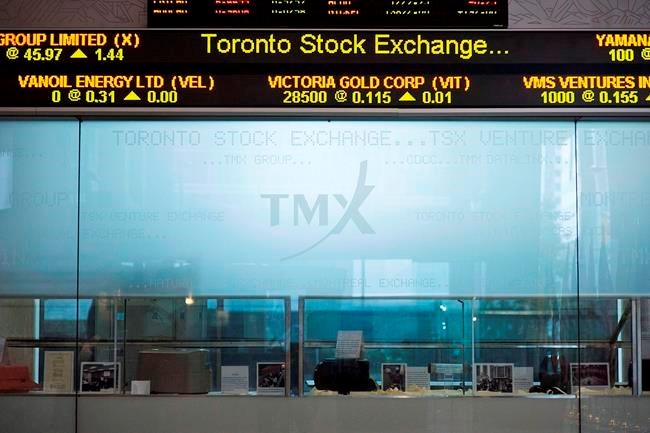TORONTO — Trading on North American stock markets was volatile Thursday as the impact from the COVID-19 pandemic continues to spook investors.
Markets moved higher in the morning after U.S. jobless claims were lower than last week but total claims due to novel coronavirus increased to nearly 26 million.
About 4.4 million Americans claimed unemployment benefits, down from a revised 5.24 million a week ago. But a record number of workers have claimed benefits over the past five weeks, wiping out all the jobs created since the global financial crisis more than a decade ago.
The market initially moved towards a risk-on day in the energy, consumer discretionary and industrial sectors.
"Those would be correlated obviously to a slightly better economic environment and those are also tied well to potential economies reopening, which we're probably going to get to in the not too distant future," said Mike Archibald, portfolio manager at AGF Investments Inc.
However, markets fell in the afternoon following a Financial Times report suggesting that Gilead Sciences’ drug remdesivir was not as successful as initially thought for treating patients with the virus. It partially recovered after the company challenged the study results and said they didn't necessarily mean the drug didn't work.
And then European Union leaders concluded a meeting by saying talks among all coalition countries ended without an agreement on a recovery package.
"So there's been a lot of headline news out there today, which has caused a lot of intraday volatility despite it being a fairly narrow trading range today, probably about one per cent from top to bottom," Archibald said in an interview.
The S&P/TSX composite index closed down 37.07 points at 14,251.09 after a swing of nearly 184 points during the day.
In New York, the Dow Jones industrial average was up 39.44 points at 23,515.26. The S&P 500 index was down 1.51 points at 2,797.80, while the Nasdaq composite was down 0.63 of a point at 8,494.75.
The Canadian dollar traded for 71.11 cents US compared with an average of 70.65 cents US on Wednesday.
Nine of the 11 major sectors on the TSX were lower, led by utilities and consumer staples.
The commodity sectors of energy and materials were higher.
Energy gained 2.4 per cent as a continued recovery in oil prices helped producers like Baytex Energy Corp. and Frontera Energy Corp., whose shares climbed 14.7 and 13 per cent respectively.
The June crude oil contract was up US$2.72 or 19.7 per cent at US$16.50 per barrel and the June natural gas contract was down 11.1 cents at US$1.94 per mmBTU.
The oil contract has gained nearly 43 per cent in the last two days since hitting a near two-decade low, but still remains about 72 per cent down from the start of the year. The decrease has come as global demand has cratered as people stay home to fight the spread of the virus.
Materials rose 1.7 per cent as higher metal prices helped companies like Torex Gold Resources Inc., whose shares were up 8.6 per cent and Ero Copper Corp., which gained 8.3 per cent.
The June gold contract was up US$7.10 at US$1,745.40 an ounce after earlier hitting a seven-year high. The May copper contract was up 2.2 cents at US$2.31 a pound.
Archibald said he believes the risk is building that reopenings won't go as quickly or smoothly as people hope, with the possibility of a second wave of infections.
"I think if you've had the good fortune, the good luck or the good timing to enter the markets at the end of March, now's not a bad time to just be a little bit patient, potentially take some money off the table and look for a better entry point."
He said the tone of the market has shifted from panic and nervousness to confidence.
While that's better than where things were in February and March, he said investors should be cautious about expecting a V-shaped recovery back to new highs. That's in part because of the great numbers of unemployed and those who fear losing their jobs.
"I think the spending pattern habits of those individuals, both sets of individuals are likely to change fairly dramatically on a go forward basis."
This report by The Canadian Press was first published April 23, 2020.
Companies in this story: (TSX:TXG, TSX:ERO, TSX:BTE, TXS:FEC, TSX:GSPTSE, TSX:CADUSD=X)
Ross Marowits, The Canadian Press



